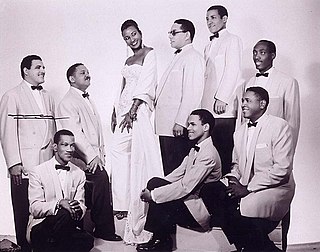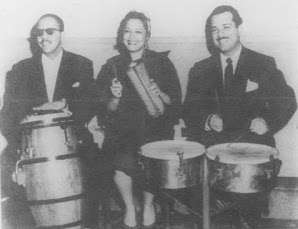This article has multiple issues. Please help improve it or discuss these issues on the talk page . (Learn how and when to remove these template messages) |
Radio Garcia-Serra was a Cuban radio station founded in 1929.
This article has multiple issues. Please help improve it or discuss these issues on the talk page . (Learn how and when to remove these template messages) |
Radio Garcia-Serra was a Cuban radio station founded in 1929.
Jorge Garcia-Serra founded Radio Garcia-Serra in Havana, Cuba in late 1929. [1] The radio station was the second radio station established in Havana, and transmitted under the call letters CMCU at a frequency of 660 kc [2] which, at the time and throughout the 1950s, was the only frequency with a clear international frequency that could not be blocked or interfered.[ citation needed ]
In the early stages, Radio Garcia-Serra broadcast music and on-air novellas written by distinguished Cuban and Spanish writers of the time. [3] [4]
During the late 1940s and 1950s, the children of Jorge Garcia-Serra owned and managed the radio station, and Roberto Garcia-Serra [5] was named the General Manager.
In the late 1940s, when studio live radio-broadcast performances were common, Radio Garcia-Serra broadcast a program at 5 PM called “Tea Hour” (Hora del Té) where Celia Cruz, the world-famous singer and representative of Cuba, had her beginnings.
Also making a debut in Radio Garcia-Serra in that same year was Fajardo y sus Estrellas. [6] Other late 1950s studio live performances included, Orquesta Aragón, Orquesta Sensación y Barbarito Diez.

Rubén González Fontanills was a Cuban pianist. Together with Lilí Martínez and Peruchín he is said to have "forged the style of modern Cuban piano playing in the 1940s".
Charanga is a traditional ensemble that plays Cuban dance music. They made Cuban dance music popular in the 1940s and their music consisted of heavily son-influenced material, performed on European instruments such as violin and flute by a Charanga orchestra.. The style of music that is most associated with a Charanga is termed 'Danzón', and is an amalgam of both European classical music and African rhythms.

La Sonora Matancera is a Cuban band that played Latin American urban popular dance music. Founded in 1924 and led for more than five decades by guitarist, vocalist, composer, and producer Rogelio Martínez, musicologists consider it an icon of this type of music. Notable singers to have sung and recorded with the band include Bienvenido Granda, Daniel Santos, Myrta Silva, Miguelito Valdés, Leo Marini, Celia Cruz, Nelson Pinedo, Vicentico Valdés, Estanislao "Laíto" Sureda, Alberto Beltrán, Carlos Argentino, and Celio González.
A descarga is an improvised jam session consisting of variations on Cuban music themes, primarily son montuno, but also guajira, bolero, guaracha and rumba. The genre is strongly influenced by jazz and it was developed in Havana during the 1950s. Important figures in the emergence of the genre were Cachao, Julio Gutiérrez, Bebo Valdés, Peruchín and Niño Rivera in Cuba, and Tito Puente, Machito and Mario Bauzá in New York. Originally, descargas were promoted by record companies such as Panart, Maype and Gema under the label Cuban jam sessions. From the 1960s, the descarga format was usually adapted by large salsa ensembles, most notably the Fania All-Stars.
Rock and roll music was introduced in Cuba in the late 1950s, with many Cuban artists of the time covering American songs translated into Spanish, as was occurring in Mexico at the same time. "The Batista police never looked kindly on Rock and Roll, and much less after the screening of films like Rebel Without a Cause and The Bad Seed, among others. After 1959, Rock and Roll followed the same path, although artists like Argentinean Luis Aguile emerged."
Alfredo Manuel De La Fé is a Cuban-born and New York–based violinist who lived in Colombia for more than 16 years and is responsible for adapting the violin to Colombian traditional dance music creating innovative Salsa and Latin American music. The first solo violinist to perform with a Salsa orchestra, De La Fé has toured the world more than thirty times, appearing in concert and participating in over 100 albums by top Latin artists, including Eddie Palmieri, Tito Puente, Celia Cruz, José Alberto "El Canario", Cheo Feliciano, The Fania All-Stars, Santana and Larry Harlow. His second solo album entitled Alfredo released in 1979 was a Grammy nominee for "Best Latin album".
Cha-cha-chá is a genre of Cuban music. It has been a popular dance music which developed from the Danzón-mambo in the early 1950s, and became widely popular throughout the world.
Federico Arístides Soto Alejo, better known as Tata Güines, was a Cuban percussionist, bandleader and arranger. He was widely regarded as a master of the conga drum, and alongside Carlos "Patato" Valdés, influential in the development of contemporary Afro-Cuban music, including Afro-Cuban jazz. He specialized in a form of improvisation known as descarga, a format in which he recorded numerous albums throughout the years with Cachao, Frank Emilio Flynn, Estrellas de Areito, Alfredo Rodríguez and Jane Bunnett, among others. In the 1990s he released two critically acclaimed albums as a leader: Pasaporte and Aniversario. His composition "Pa' gozar" has become a standard of the descarga genre.
Rodrigo Prats was a Cuban composer, arranger, violinist, pianist and orchestral director.
Abelardo Barroso Dargeles was a Cuban bandleader and singer, the first sonero mayor to be recognized as such by the Cuban public.
Andrés Echevarría Callava, better known as Niño Rivera, was a renowned Cuban tres player, songwriter and arranger. Early in his career he played with the Sexteto Boloña and Sexteto Bolero, before forming his own conjunto in the 1940s. His music was based on popular Cuban forms such as the son montuno and the chachachá, often with notable jazz influences.
Radio Mil Diez was a radio station broadcasting from Havana, Cuba, owned by the Popular Socialist Party (PSP). Radio Mil Diez broadcast for five years, between 1943-1948, and played an important role in shaping contemporary Cuban music.
Ulpiano Díaz (1900–1990) was a Cuban timbalero. He is considered an innovator of the timbales, being the first to add a small cowbell to the setup, and popularizing the abanico. He started his career playing güiro in Félix González's orquesta típica, and rose to prominence as the timbales player of three important charangas: Orquesta de Tata Alfonso, Arcaño y sus Maravillas and Fajardo y sus Estrellas.
Raimunda Paula Peña Álvarez, better known as Paulina Álvarez, was a renowned Cuban singer of danzonetes. She became the leading exponent of the genre during the 1930s, being nicknamed La Emperatriz del Danzonete. Her greatest hit was the song "Rompiendo la rutina", the first danzonete, composed by Aniceto Díaz in 1929. In 1960 she recorded her only LP record.
Puchito Records was Cuba's second independent record label. It was founded in 1954 during the mambo and cha-cha-chá explosion. Many of its recordings, produced by its founder Jesús Gorís, became instant hits.
Puchito Records was Cuba's second independent record label. It was founded in 1954 during the mambo and cha-cha-chá explosion of the 1950s. Many of its recordings, produced by its founder Jesús Gorís (1921–2006), became instant hits. Cuban music styles represented in its discography include danzón, güajira, son cubano, son montuno, cha-cha-chá, guaracha, guaguancó, Cuban bolero, Cuban rumba, mambo, new flamenco, and Zarzuela. Other styles include farruca, merengue (Dominican), Ranchera (Mexican), nueva canción (Mexican) ... styles from Spain include cuplé, pasodoble, and flamenco. The ensembles range from studio orchestras to jazz combos to big bands to charangas.
Manolo Álvarez Mera(néManuel Ernesto Álvarez-Mera 7 November 1923 Havana, Cuba – 16 October 1986 New York City) was a Cuban-born tenor who flourished as a bel canto during the late 1940s and 1950s. Despite having an operatic caliber voice, he gained popularity singing in operettas, musical reviews, radio, television, vaudeville, and major night clubs in Cuba, New York, and Latin America. He became a Cuban exile in 1960 after the Cuban Revolution.
Félix Rafael Herrera Altuna, better known as Félix Reina, was a Cuban violinist, arranger, music director and composer. Since the mid-1940s, he was a member of many popular charangas, including Arcaño y sus Maravillas, Orquesta América and Fajardo y sus Estrellas. In 1959, after Fajardo went into exile, he became the leader of his orchestra, the Estrellas Cubanas, which he directed until his death. A prolific composer, his most performed danzones include "Angoa", "Los jóvenes del silencio" and "El niche". In the 1950s, he primarily wrote chachachás and his bolero "Si te contara" became a standard of the genre.

Dominica Verges González was a Cuban singer, famous for her interpretation of danzones. She started her career at a very young age singing in her family's son septet, which she left to settle in Havana in 1935. There she performed with several female orchestras such as Anacaona and Orquesta Ilusión, before joining Alfaro Pérez's Orquesta Siglo XX in 1938. With the Siglo XX Verges became a popular danzón singer, making several recordings in the 1940s. She also sang with Justa García's quartet, Orquesta Almendra and the Charanga Típica Cubana, among other groups, before retiring in 1982.

Arcaño y sus Maravillas was a Cuban charanga founded in 1937 by flautist Antonio Arcaño. Until its dissolution in 1958, it was one of the most popular and prolific danzón orchestras in Cuba, particularly due to the development of the danzón-mambo by its two main composers and musicians: Orestes López and his brother Israel López "Cachao" (bass). Such upbeat version of the danzón served as a precursor of the mambo popularized by Pérez Prado, as well as the chachachá created by Enrique Jorrín, a violinist who started his career in the Maravillas. Other important musicians in the Maravillas were pianist Jesús López, timbalero Ulpiano Díaz, violinist Félix Reina and flautist Eulogio Ortiz.